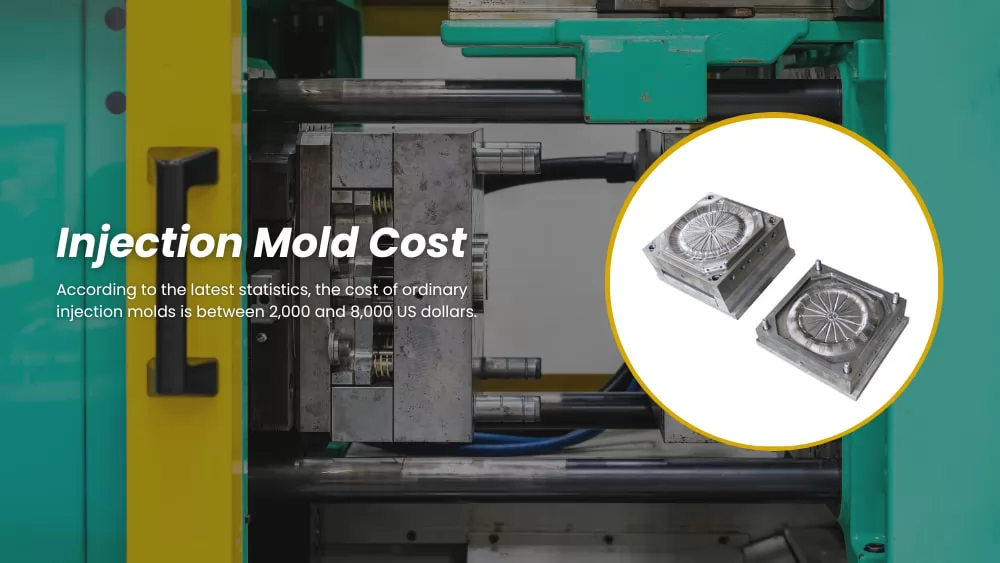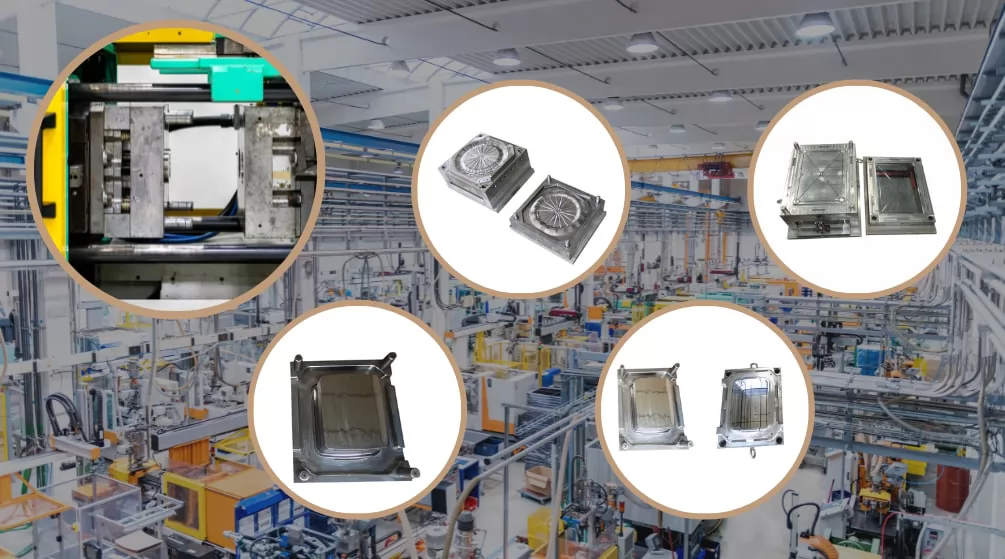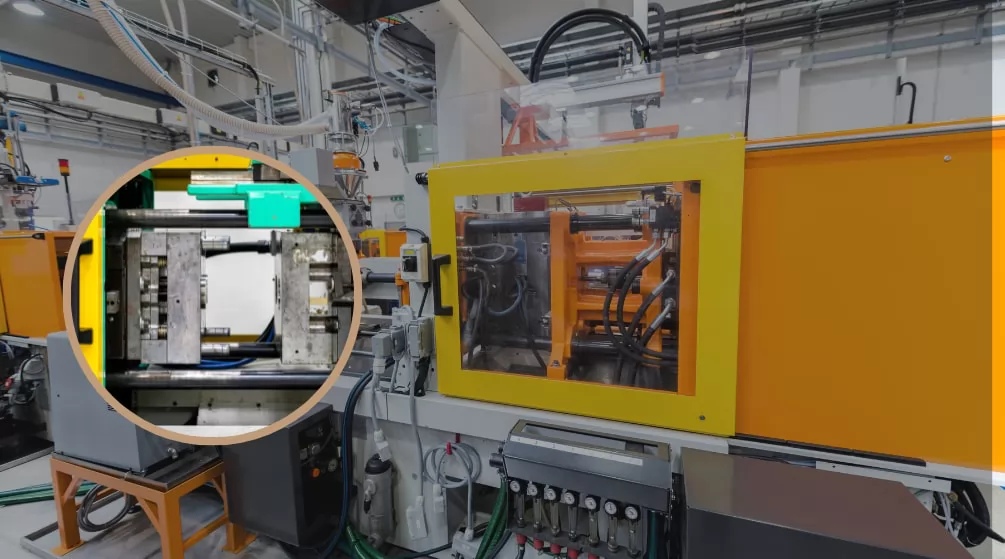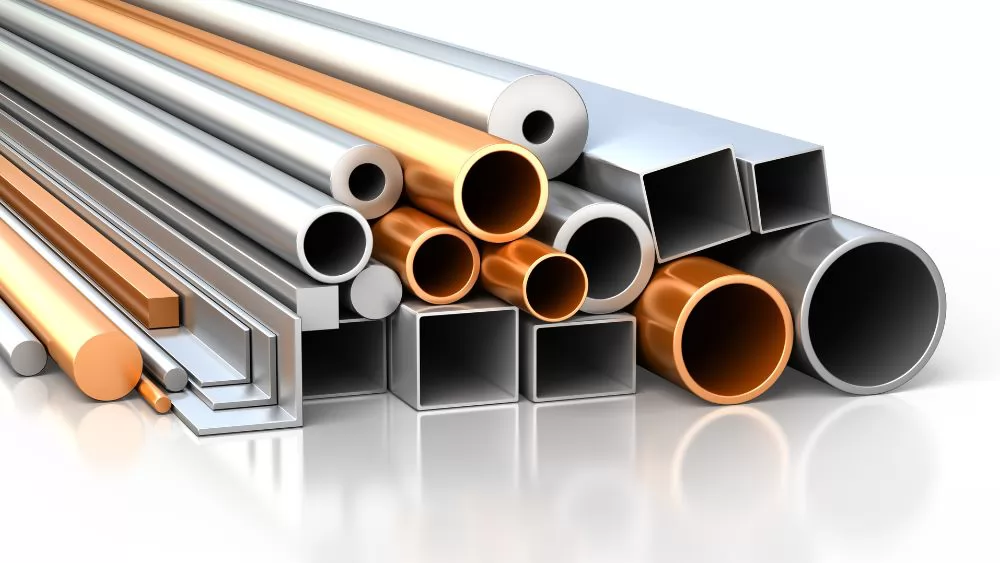
List of Contents |
According to the latest statistics, the cost of ordinary injection molds is between 2,000 and 8,000 US dollars. The cost of an injection mold can vary based on a number of factors, so it's important to get quotes from several companies before making a decision.
This article provides a detailed analysis of the factors that affect the final injection mold cost and how to reduce this cost.
What Is an Injection Mold
An injection mold is a tool comprised of a series of parts that allows molten plastic to be formed and cooled in such a way as to create a discrete part shape. Injection molds offer a high level of precision and accuracy when creating complex shapes and intricate details. This is especially beneficial for industries that require tight tolerances to ensure proper functioning of the final product.
Why We Need Injection Molds
Before formally understanding the cost of injection molds, it may be useful to think about why we need injection molds. Here are some reasons.
-
Mass Production: Injection molding allows for the mass production of plastic parts and products. Using molds, we can quickly replicate the geometric shapes of parts thousands or even millions of times. This significantly improves production efficiency and reduces the likelihood of errors.
-
Complex Geometries: Injection molds can create parts with complex geometries, including undercuts, threads, and very fine details.
-
Strict Tolerances: Properly designed and manufactured molds can produce parts with very tight tolerances.
-
Material Versatility: Different mold materials, such as steel and aluminum, can accommodate various plastic resins with different temperature and viscosity requirements.
-
Economic Feasibility: Although the initial production cost of molds is high, the per-piece cost of injection molding becomes very low in large-volume production, making it economically viable for high-volume manufacturing.
Estimate the Cost of an Injection Mold Online
In an effort to make estimating the cost of injection molds simple and easy, I spent a lot of time finding this online site that allows you to easily estimate costs online.

How Much Does an Injection Mold Cost?
| Mold Type | Market Price (USD) |
|---|---|
| Household Mould | $2,200.00 - $30,000.00/set |
| Plastic Medical Mould | $5,500.00 - $26,200.00/set |
| Pallet and Crate Mould | $1,500.00 - $120,100.00/set |
| Packaging Mould | $1,500.00 - $30,000.00/set |
| Plastic Tableware Mould | $5,000.00 - $13,000.00/set |
| Home Appliance mould | $2,200.00 - $10,000.00/set |
| Automotive Part Mould | $6,500.00 - $12,000.00/set |
| Plastic Pipe Fitting Mould | $1,000.00 - $8,000.00/set |
What Are the Factors That Affect the Cost of Injection Molds?

Typically, the cost of the injection mold, also referred to as the tooling cost, is the major cost driver in injection molding. Let’s take a look at some of the elements that influence the price of an injection mold.
1. Your Part’s Complexity
Keep in mind that building an injection mold is a process in and of itself. The more complicated your part, the longer it will take to produce the mold. Greater accuracy is necessary to maintain the mold’s and the part’s quality, and a reputable mold maker will collaborate with you to manage flow rate, cooling time, and other critical components of the molding process.
2. Size of Your Part
Larger components necessitate larger molds, which necessitate more material and time in production. Costs are connected with the production of a bigger mold, especially if the mold is manufactured anywhere other than the facility that will be producing your components.
3. Your Mold Material Will Be
Tool steel is often regarded as the benchmark in injection mold material: It is high-quality, robust, and generally long-lasting, and it may be used with a wide variety of plastic injection molding materials. It is also one of the most expensive mold materials available.
4. Best Practices for Component and Mold Design Are as Follows
If it concerns manufacturability, one product or mold might be created in 100 different ways. There may not be a “best” method, however, there are easier methods than others, here’s where guiding principles for both products and mold design — as well as their impacts on mold and production costs — come into play.
5. Mold Efficiency
In a word, this involves planning ahead of time and making the most of your mold. Assume your product is a basic, egg-shaped plastic component with a 50,000-part first production run. Can you imagine how long it would take to make those pieces one at a time? You may develop a mold that can manufacture multiple (or more) parts in a single machine cycle by working with an expert and efficient mold designer.
Mold manufacturer location: This was also mentioned while researching how mold size may affect your total injection molding expenses. To have your mold wherever it needs to go, an off-site plastic injection mold maker will charge you extra for shipping and handling.
How to Reduce the Cost of Injection Mold?

In order to get the best value for your money when it comes to injection mold costs, there are a few things you can do.
Eliminate Undercuts:
Injection molding undercuts can be a difficult and costly problem to fix. They are caused by the mold not being able to release the part from the mold cavity. Undercuts can also lead to the material not flowing properly into the mold cavity.
There are a few ways to eliminate undercuts, but the best way is to design the part so that it can be molded without them. This can be done by using symmetrical geometry, designing bigger draft angles into the part, or using core pins.
Get Rid Of Unnecessary Features
In order to produce a high quality product, it is important to get rid of unnecessary features and simplify the design injection molding.
This will minimize the potential for defects and improve the overall efficiency of the production process. There are a few key things to keep in mind when simplifying a design for injection molding:
1. Remove any features that are not absolutely essential to the function or aesthetics of the final product.
2. Make sure that all remaining features are as simple as possible, with clean lines and smooth surfaces.
3. Avoid sharp corners and other areas where material could become trapped during the injection molding process.
Use A Core Cavity Approach
A core cavity approach to injection molding is a process whereby a mold is created with an inner core that forms the shape of the desired product. The molten plastic is then injected into the mold and allowed to cool, forming the product.
This approach has several benefits over traditional injection molding methods, including increased accuracy and precision, as well as decreased production time and costs.
Design Self-Mating Parts
When it comes to injection molding, the design of self-mating parts is an important consideration. This is because self-mating parts must be able to fit together perfectly in order to function properly. Injection molding is a process that can create very precise parts, so it is important to take advantage of this when designing self-mating parts.
There are a few things to keep in mind when designing self-mating parts for injection molding. First, the part must be designed so that it can be easily removed from the mold. Second, the part must be designed so that it can be assembled and disassembled easily. Third, the part must be designed so that it can mate with other parts without any gaps or other problems.
Modify And Reuse Plastic Molds
In the plastics industry,modifying and reusing molds is a common practice. It can be done with either new or existing molds and can save companies time and money.
There are several reasons why a company might choose to modify a mold. In some cases, the original mold was not designed correctly and needs to be modified to fix the problem. Other times, a company may want to change the design of the part that is being produced.
Pay Attention To DFM Analysis
-
Pay attention to DFM analysis when injection molding. It can help improve the quality of your products and avoid potential problems.
-
DFM analysis takes into account the specific dimensions and tolerances of your parts. It can help you optimize the design of your injection mold and ensure that your parts meet your specifications.
-
Pay attention to DFM analysis when injection molding to improve the quality of your products and avoid potential problems. With proper analysis, you can optimize the design of your injection mold and produce parts that meet your specifications.
Use A Multi-Cavity Or Family Plastic Mold
Using a multi-cavity mold can be more expensive than using a single-cavity mold, but it can also be faster and more efficient. If you need a large number of parts, or if your part is complex and has many features, a multi-cavity mold may be the best option.
The price of a multi-cavity mold can vary depending on the size and complexity of the mold. However, in general,multi-cavity molds are more expensive than single-cavity molds.
Choose On-Demand Production Option
As the world increasingly moves away from traditional manufacturing methods, on-demand production is becoming a more popular option for businesses. Plastic molding is one area where on-demand production can be a great option for businesses. There are many benefits to choosing on-demand production for your plastic molding needs, including a reasonable price.
On-demand production can save businesses money in the long run by reducing inventory costs and eliminating the delivery time. In addition, on-demand production can help businesses respond quickly to changes in customer demand.
There are several benefits to choosing an on-demand production option for your plastic mold needs. Perhaps the most obvious benefit is that it allows you to only produce what you need, when you need it. This can help save on costs associated with inventory and storage. Additionally, on-demand production can help reduce lead times and improve flexibility in your supply chain.
Consider Plastic Part Size
When considering the size of a plastic mold, it is important to take into account the reasonable price for the project. Depending on the desired outcome, the size of the mold may need to be changed in order to accommodate for different parts.
It is also necessary to take into consideration how the plastic mold will be used. If it is for a one-time project, then a smaller size may be more cost effective. On the other hand, if the mold will be used multiple times, then a larger size may be necessary in order to avoid having to replace it frequently.
Ultimately, the decision of what size plastic mold to use should be based on what is most likely to produce the desired results at a reasonable price. Taking into account all of these factors will help ensure that the final product is exactly what is needed.
Is Injection Molding Compatible with Other Materials?
Although manufacturers commonly utilize injection molding for the mass production of thousands of identical parts using thermoplastic and thermosetting polymers, materials such as metals and elastomers are also compatible materials.
Metal Injection Molding

Metal injection molding (MIM) is an advanced powder metallurgy process used to produce small, precise metal parts. In this process, fine metal powders are mixed with plastic binders and injected into mold cavities by an injection molding machine. The molded parts then undergo debinding and sintering processes to remove the plastic binders and increase the density and strength of the metal powders.
Common metals used in the MIM process include stainless steel, titanium alloys, aluminum alloys, and other specialty metal materials. Metal injection molding can produce complex-shaped parts that are difficult to manufacture using traditional metal working methods while maintaining high dimensional accuracy.
Elastomer Injection Molding
Apart from metals, elastomers such as thermoplastic elastomers (TPE), silicone, and rubber can also be processed using injection molding techniques. Similar to plastic injection molding, the molten elastomeric material is injected into mold cavities and cooled to solidify into the desired shape.
Elastomer injection molded products typically exhibit good flexibility, wear resistance, and sealing performance, and are widely used in the automotive, medical, and consumer electronics industries to manufacture seals, gaskets, grips, and other components.
Affordable Plastic Mold Manufacturer
Hing Tung is a reliable plastic mold manufacturer, helping customers design and manufacture various precision injection molds, providing a complete injection molding service in China. We are a first-class injection mold manufacturer in China with a modern production line and a professional engineer team. It is guaranteed that you can buy cheap injection molds without compromising quality.
If you are not sure what kind of mold you need, then you can contact us, our experts will provide you with free guidance and advice. Help you make the right choice!
Conclusion
Remember, the cost of the tooling is just the beginning. To calculate the complete plastic injection molding cost for any project, you must also include future raw material, operating and maintenance expenses. These costs are the result of the influencing factors mentioned above. If you are not sure how to calculate these costs, then you can consult our molding experts, they will answer all your questions and give sound advice.


